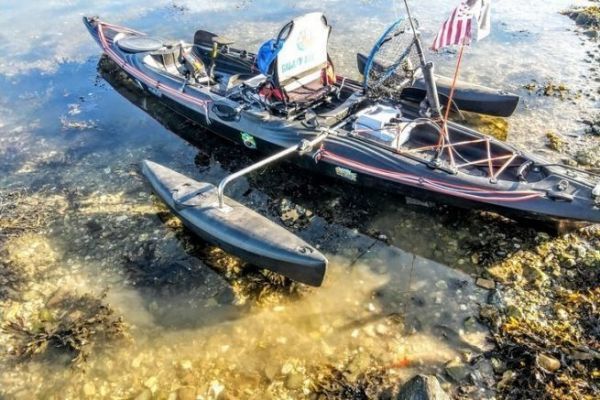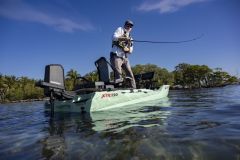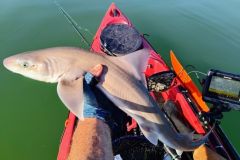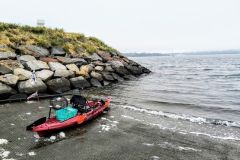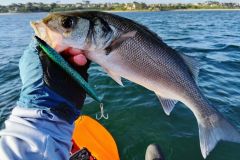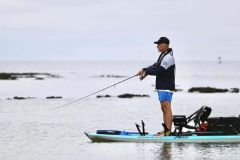Stability will depend on several things
First of all, the dexterity of the angler sitting in the float is the most important factor. Not everyone has the same ease and experience in navigating our little pieces of plastic. Then, of course, there's the shape of the hull: a long, slender kayak of the decked type will be fast, but unstable. Conversely, a short, stocky kayak will be more "seated" on the water.
Most modern fishing kayaks are stable, some have gull-wing hull designs, others have catamaran shapes, and most are quite wide, over 75 cm. The average is between 80 and 85 cm wide. Despite this, many still don't find them stable enough, often due to lack of practice. Kayak fishing has been democratized over the last few years, and many people are taking it up with no experience whatsoever.
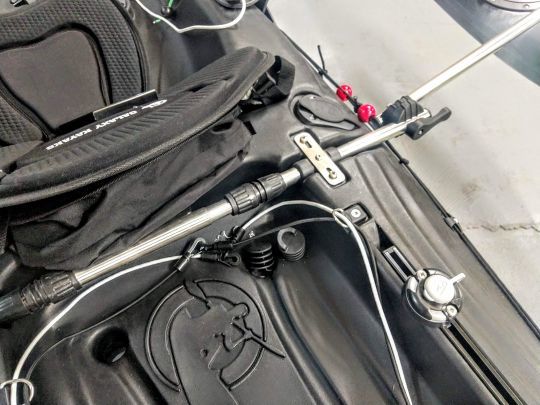
Determinant according to practice
Depending on the application, an additional gain in stability or buoyancy (for heavier people, for example) may be required.
- For spearfishermen who need to get into the water often and get back up in their float
- For beginners to gain a little more confidence
- For fans of stand-up fishing
- For fly-fishing kayakers
- For kayak sailing
A simple way of doing this is to add a pair of additional stabilizers. Various systems are available, ready to be fitted without great difficulty.
Rigid floats (Galaxykayaks, RTM)
They are mounted on rigid arms, themselves mounted on the kayak's hull. They can often be folded down to several positions. Some kayaks feature inserts for mounting these systems. They can also be mounted using Railblaza accessories (see photo), which attach to existing accessory rails. Alternatively, specific inserts can be added, if they are not original, to install the support arm system.
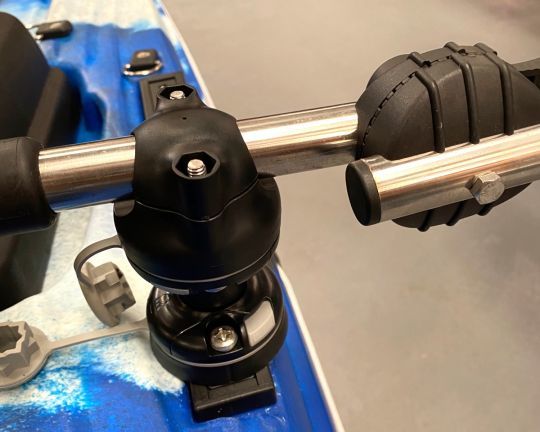
Some additional floats even have watertight hatches for storing gear inside, very practical if you're going on a weekend fishing trek on your own.
Inflatable floats (Hobie)
These floats have the advantage of being very light, and the installation principle is the same as for rigid systems.
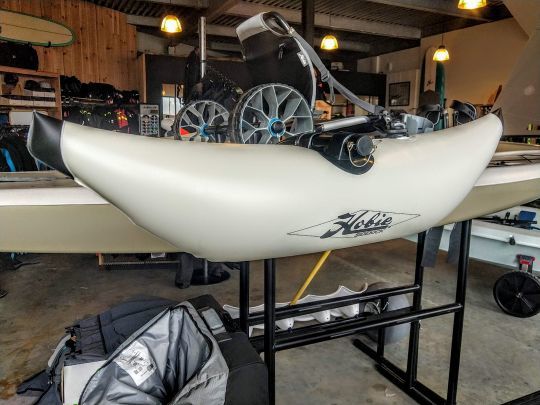
In any case, avoid DIY systems. Even if the cost is a consideration, the weight of the boat, the force of the waves and the movements of the kayak all put great strain on the assembly. So it's best to opt for a system that's been specially designed for the job, rather than a rough-and-ready job. A complete, reliable and easy-to-install system costs around 200 to 400 euros. Peace of mind is priceless...

 /
/ 